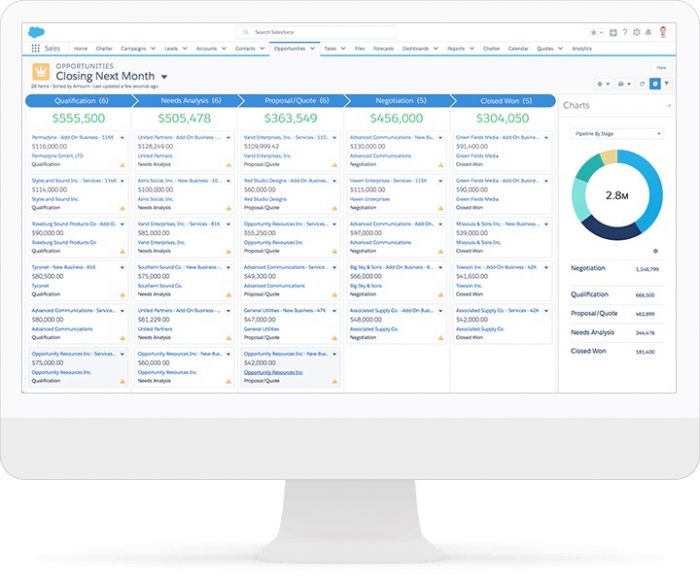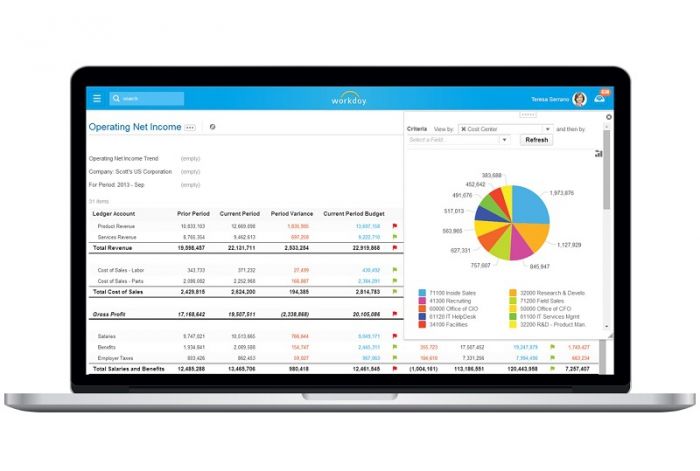8 Key Questions about SaaS
What is SaaS?
Software as a service (SaaS) is cloud-based software that provides access to data from any device connected to the Internet. Developers of such software maintain servers and databases.
The SaaS model eliminates costs associated with purchasing and maintaining computer equipment needed to install “stationary” software. The system’s stability is supported by the developer.
There’s no need to purchase a license and make annual payments of 15 – 20% for SaaS. The license and technical support are already included in the software rental cost.
Is SaaS suitable for all types of businesses?
It is believed that cloud software is preferred by small and medium-sized businesses, where reducing costs is essential. For example, advertising, travel, and digital agencies. Large organizations, especially those in niche industries, are more inclined toward in-office administered systems. However, as seen in the cases of companies like Aston Martin and TripAdvisor (discussed below), SaaS services also have much to offer for managing business operations in large corporations.
When did SaaS appear?
The idea that cloud-based software could be used by businesses was proposed as early as 1961 by scientist John McCarthy, who coined the term “artificial intelligence.” In the late 1990s and early 2000s, he witnessed Salesforce and other companies bringing his long-standing suggestion to life.
Initially, SaaS services were not very popular, but in the past 5 – 7 years, this model has gained widespread adoption in the business world.
Can SaaS be customized?
Stationary software is more flexible than cloud software. However, SaaS developers are steadily addressing this shortcoming. In the past, businesses had to adapt fully to the software. Now, they can customize the user interface, select the type of data displayed, and even request developers to add or remove certain features.
Who will own the data?
Most service-level agreements (SLAs) with SaaS developers clearly state that the client owns the data. Moreover, many providers allow for exporting and backing up information at any convenient time. If a company providing SaaS insists on owning the data, it’s best not to cooperate with them.
Are the data secure?
Many SaaS developers undergo audits to ensure that their data centers are protected by the leading American standard SAS70 Type II. This means maximum protection against external intrusion and access to physical information carriers based on biometric data. Data centers are under 24⁄7 security, have backup power, and additional network access channels.
What happens if your SaaS provider shuts down?
Companies providing SaaS usually prepay hosting organizations where clients’ information is stored. Therefore, in case of a force majeure event, the data will remain accessible.
The SLA also outlines the provider’s termination scenario. It typically states that the client will get back their data in an agreed-upon format.
What if the Internet connection is interrupted?
Dependency on an Internet connection is the main disadvantage of SaaS. However, some developers have already implemented the ability to work offline, with data syncing upon reconnection.
Advantages of SaaS
40% of all CRM systems* sold in 2012 were SaaS. In 2013, half of the companies in North America and Europe were ready to invest in cloud technologies. Businesspeople leaned toward SaaS solutions because they didn’t have to spend on equipment, installation, and operation.
According to IDC research, the SaaS market is expected to reach a capacity of over $110 billion in 2019, up from $50 billion in 2018.
Pros and Cons of SaaS
Pros:
- Accessible at any time, any day of the week
- Can continue working on the go from a mobile device
- Savings compared to “boxed” versions – about 60%
- Updates occur automatically
- Serious data protection
- Comprehensive licensed software package
Cons:
- Work is interrupted without an Internet connection
- Less flexible compared to in-office systems
CRM system – software for automating interactions with customers. Used to increase sales, improve service, and optimize marketing activities. In Ukraine, CRM systems from OneBox, 1C-Bitrix, Terrasoft, Integros, and others are used.
SaaS Market Leaders
Financial indicators of SaaS market leaders in 2013:
Company Name | Market Capitalization (Billion USD) | Profit (Million USD) |
Salesforce | 26.7 | 3972 |
LinkedIn | 26.1 | 1511 |
Workday | 12.9 | 439 |
NetSuite | 7.3 | 409 |
ServiceNow | 5.8 | 409 |
Concur Technologies | 5.6 | 576 |
Athenahealth | 4.2 | 539 |
The Ultimate Software Group | 4.1 | 409 |
Cornerstone OnDemand | 2.7 | 185 |
Medidata | 2.3 | 276 |
Salesforce – a company that was at the forefront of SaaS. Known for its CRM systems, which can be used in small businesses, startups, and various industries. Salesforce’s products include Data.com, Pardot, Sales Cloud, Service Cloud, App Cloud, Desk.com.
LinkedIn – a social network for establishing business contacts used by nearly 500 million users worldwide. Although its SaaS affiliation is sometimes contested due to a lack of “pure” features, the availability of a premium subscription for expanding the client base or enhanced specialist search argues for its SaaS status.
Workday produces applications for financial management, team management, and even assists students in learning.
NetSuite – cloud SaaS technologies for resource planning, e‑commerce, accounting, inventory management, and more.
ServiceNow – creates applications for IT service management (ITSM), essentially project management in IT.
Concur Technologies focuses on applications for travelers and expense tracking.
Athenahealth offers cloud applications for the medical sector.
The Ultimate Software Group creates software for personnel management in various fields and for businesses of different sizes.
Cornerstone OnDemand offers management services used by 12 million users in 190 countries worldwide.
Medidata develops cloud applications that aid in website development.
Examples of SaaS Use
Let’s look at how SaaS business solutions helped renowned companies improve their performance. The cases were shared by cloud software market leaders – Salesforce and Workday.
Salesforce Case: Aston Martin
The English company Aston Martin has been producing prestigious sports cars for over 100 years. Most models are hand-assembled, so less than 100,000 cars have been manufactured over a century. In 2016, the company introduced the DB11 model – the first product developed under the six-year Second Century plan. The car is positioned as a blend of exceptional design, excellent performance, and ever-relevant luxury.

DB11, websir Aston Martin
To draw attention to its new development, Aston Martin needed to improve its database management. The company had accumulated a vast amount of information that needed structuring. Much of the data came from dealers – over 150 representatives in more than 40 countries worldwide. The lack of a unified information system with dealers led to missed potential clients.
A year before the DB11 release, the company implemented the Sales Cloud system. Previously, only ten employees worked with client data, mainly analyzing their age. To adapt to the new system, Aston Martin’s IT department used another tool from Salesforce – Trailhead, which contains training lessons.

Now, more than 150 Aston Martin employees and 500 dealership staff use Sales Cloud to collect, track, and distribute information about the company’s capabilities and customer preferences. They also analyze data on clients who chose other premium car manufacturers.
Workday Case: TripAdvisor
Founded in 2000, TripAdvisor is now the largest travel website. Its monthly audience exceeds 300 million unique users, of whom more than 70 million are registered. The site operates in 25 languages across 45 countries.
In late 2011, TripAdvisor was separated from its parent company – another travel website, Expedia, whose ERP system* it used. The system was not remote; it was installed on servers and computers in the office. TripAdvisor’s managers were dissatisfied with its speed: they had to wait for analytics and reports. With the site’s growing traffic, such an ERP system hindered progress.
Workday offered an alternative. Its Human Capital Management system was implemented in five months, while the Financial Management system took seven months to install.

Workday Financial Management, Workday’s website
Verdict
SaaS is a service provided through a web interface. The software is deployed in a data center and offered under a rental agreement with regular payments. The cost covers not just software use but also the provider’s expenses for technical support, updates, and data protection. All services operate this way.
For example, Worksection provides project management, allowing complete control over finances and deadlines. The number of connected participants (unlike other similar programs) does not affect the tariff; the cost depends only on the number of projects and the cloud storage volume.
SaaS for small businesses and larger organizations is an excellent way to drastically reduce capital expenditures without compromising functionality.